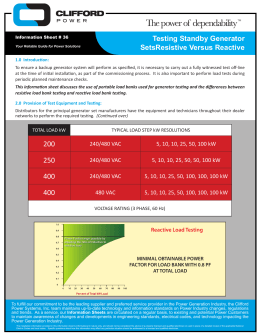- 2018 Mechanical Code Book
- International Mechanical Code 507
- International Mechanical Code Free Download
Instantly Download the 2018 IPC International Plumbing Code. Download To Any Device & Read Right Now Without Waiting For Shipping. The 2018 Significant Changes guides are available for the International Building, Residential, Fire, Plumbing, Mechanical and Fuel Gas Codes. This valuable series can help any code user save time by zeroing in on the most critical changes in the 2018 International Codes. The International Codes (I-Codes), developed by the International Code Council, are a family of fifteen coordinated, modern building safety codes that help ensure the engineering of safe, sustainable, affordable and resilient structures. The I-Codes are the most widely accepted, comprehensive set of model codes used in the United States. Nov 23, 2017 2018 International Mechanical Code, Loose-leaf Version International Code Council on Amazon.com.FREE. shipping on qualifying offers. Establishes minimum regulations for mechanical systems using prescriptive and performance-related provisions. The IMC was developed with broad-based principles that make possible the use of new materials. The Mechanical Code 2018 (IMC 2018) is a model code produced by the International Code Council (ICC). This document provides the foundation for many state and city codes. The IMC 2018 combined with local jurisdiction amendments form the state codes. The 2018 International Mechanical Code (IMC) is now available, and local governments across the United States have begun the process of adopting the latest version of the IMC to govern the design and installation of ventilation systems, exhaust systems, solar thermal systems and various other mechanical systems. As is common with the release of any new product, we are often asked the question. Instantly Download the 2018 IMC International Mechanical Code. Download To Any Device & Read Right Now Without Waiting For Shipping.
The 2018 Significant Changes guides are available for the International Building, Residential, Fire, Plumbing, Mechanical and Fuel Gas Codes. This valuable series can help any code user save time by zeroing in on the most critical changes in the 2018 International Codes. The Code Council’s technical experts provide summaries, analysis and graphics for these changes making them clear and easy to understand.
2018 International Building Code
A clarification to Section 406.6.2 (Ventilation of enclosed Parking garages) of the 2018 International Building Code (IBC) states that: Chapters 4 and 5 of the International Mechanical Code (IMC) are now specifically referenced to ensure that all IMC ventilation and exhaust requirements for enclosed parking garages are applied.
This change is significant because Chapter 4 of the IMC mandates minimum ventilation rates for enclosed parking garages. The ventilation system can be designed to operate either continuously or intermittently, providing the necessary fresh air into the structure. Exhaust, as regulated in IMC Chapter 5, must also be provided to remove air to the outdoor atmosphere. Both chapters of the IMC are now referenced to ensure that all IMC requirements for enclosed parking garages are applied. In addition, an exception has been introduced exempting enclosed parking garages accessory to one- and two-family dwellings from any ventilation and exhaust requirements. This exception will expand the scope of the exemption beyond Group U private garages. With the limited scope of one- and two-family dwellings, there is little chance multiple vehicles will be operating at the same time, regardless of the size of the garage.
Click here to read the full significant change.
2018 International Fire Code
A modification to Section 901.8.2 (Removal of Occupant-use Hose Lines) of the 2018 International Fire Code (IFC) authorizes the code official to allow the removal of occupant-use hose lines.

This change provides additional guidance to the fire code official for those circumstances where occupant-use hose lines may be removed. The occupant use hose is typically 1 1/2-inch hose with a nozzle which is part of a Class II standpipe system. Class II hose connections are not required when the building is sprinklered; most new construction is now required to be sprinklered. The IFC and IBC only require the Class II standpipe system for stages with greater than 1,000 square feet.
Click here to read the full significant change.
2018 International Residential Code
A modification to Section N1104.1 (Lighting) of the 2018 International Residential Code (IRC) states that: the required percentage of permanent lighting fixtures having high-efficacy lamps has increased from 75 percent to 90 percent.
This change is significant because the definition for high-efficacy lamps and the requirement for a certain percentage of high-efficacy lamps in permanent lighting fixtures first appeared in the 2009 IRC. Lamps have traditionally been referred to as light bulbs. By definition, high-efficacy is determined by the lumens (light emitted) per watts (W) of power to produce the light. The acceptable ratio of lumens to watts depends on the wattage of the lamps. For example, a 60-watt or greater lamp must produce at least 60 lumens/W to be considered high efficacy. Examples of high-efficacy lamps are compact fluorescent lamps (CFLs), T-8 linear fluorescent lamps and LED lamps.
Since the 2009 code, the lighting market has been rapidly moving toward high-efficacy lighting and phasing out incandescent lamps, which are not high efficacy. The 2009 IRC required at least 50 percent of the lamps in permanently installed lighting fixtures to be high-efficacy lamps. In the 2012 edition, that number was raised to 75 percent. In the 2018 code, the percentage of permanent lighting fixtures containing only high-efficacy lamps has increased to 90 percent to align with market trends and improve energy savings. Switching to an LED lamp, for example, can reduce electricity consumption by more than 80 percent when compared to an incandescent bulb. The new requirement still allows 10 percent of fixtures to have lamps that are not high efficacy to accommodate decorative incandescent lighting.
Click here to read the full significant change.
2018 International Mechanical Code
An addition to Section 504.4.1 (Clothes Dryer Exhaust Termination) of the 2018 International Mechanical Code now addresses the required size of dryer exhaust duct terminals.
This change is significant because the allowed length of a clothes dryer exhaust duct is based on the assumption that the exhaust terminal poses little flow resistance. Nothing in the code requires a reduction in the allowable length of the duct based on the resistance of the exhaust terminal; therefore, it was determined to be necessary to specify a minimum size terminal opening to account for the flow resistance offered by the terminal.
Dryer manufacturer’s instructions will specify the minimum opening depth for outlet hoods and this new code text further specifies a minimum terminal opening area. The minimum opening area of 12.5 square inches is equivalent to the area of a 4-inch round duct.
Click here to read the full significant change.
- Available Formats
- Options
- Availability
- Priced From ( in USD )
- Secure PDF
- 👥
- Immediate download
- $89.00
- Softcover
- Ships in 3-5 business days
- $89.00
Customers Who Bought This Also Bought
ICC IMC-2018 Commentary
Priced From $120.00ICC ICCPC-2018
Priced From $61.00ICC IEBC-2018
Priced From $77.00ICC IECC-2018
Priced From $49.00
About This Item
Full Description
Establishes minimum regulations for mechanical systems using prescriptive and performance-related provisions. The IMC was developed with broad-based principles that make possible the use of new materials, methods and design.Important changes include:
2018 Mechanical Code Book
- Added coverage of pollution control units.
- A new exception was added to recognize Type I kitchen hoods listed for clearances to combustibles of less than 18 inches.
- Added coverage for a newer type of non-metallic duct, phenolic duct.
- New coverage for high volume large diameter fans (HVLD), also referred to as high volume low speed (HVLS) fans.
- Relaxed requirements for sealing of duct joints and seams for Snap- and Button-lock duct joints located within the thermal envelope.
Document History
Browse related products from International Code Council


International Mechanical Code 507
- International Code Council >2018 International Codes